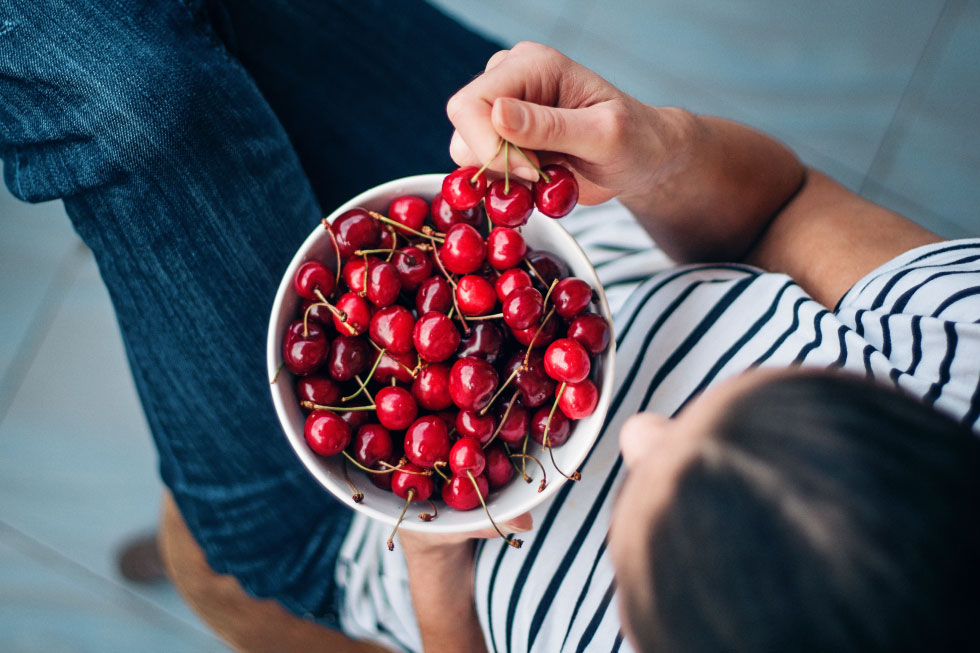
Tuesday Trivia: Cherry Edition
Posted May 18, 2021
in Food + Nutrition
Cherries are in season and we as Dietitians couldn’t be more excited. We love to throw them in everything from smoothies, to salads to a demi glaze sauce for steak. So to kick off cherry season outside of recipes (which we have plenty of!), here are some fun facts about them:
- There are more than 1000 varieties of cherries, although only around 20 are used and sold to consumers.
- Washington, Oregon, and California produce 94% of America’s sweet cherries.
- The country of Turkey produces the most cherries worldwide, however you can find orchards across the entire Mediterranean region.
- Cherry trees don’t start producing cherries until they’re anywhere from 4-7 years old depending on the species.
- Cherry trees begin blooming in April and produce cherries throughout the summer with June being the peak harvesting time in the United States.
- Wild cherry trees can grow up to 80 feet tall.
- Cherries are in the rose family which includes apples, pears, peaches, almonds, plums and apricots.
- Cherries in the United States are harvested using a machine that shakes the tree until the cherries fall off.
- In Japan, some hand-picked cherries can cost almost $10 per cherry.
- One cherry tree can produce up to 150 pounds of cherries.
- Cherries are full of fiber, potassium, and vitamin C making them great for your immune system as well as skin, heart, and gut health.
- Cherries are rich in antioxidants and anti-inflammatory compounds such as beta-carotene, anthocyanins, and vitamin C.
- Cherries contain polyphenols which support overall health and the immune system.
- The potent polyphenol content in cherries may help fight cellular damage and may protect against certain cancers.
- Research has found eating cherries may reduce gout and arthritis symptoms, possibly from their anti-inflammatory compounds.
- Even though sweet cherries are typically sold by themselves and eaten whole while tart cherries are often used in pies and baking, both have a similar nutritional makeup.
- Sweet cherries taste sweet and tend to be dark red to black in color while tart cherries are lighter in color and taste more sour.
- Tart cherry juice is a good source of minerals such as iron, calcium, zinc, potassium, and magnesium.
- Some research has shown faster recovery times in athletes when drinking 2 ounces of tart cherry juice for 8 days.
- Tart cherry juice contains tryptophan which is a precursor to melatonin and may improve sleep quality.
Here some of our top favorite cherry recipes:
